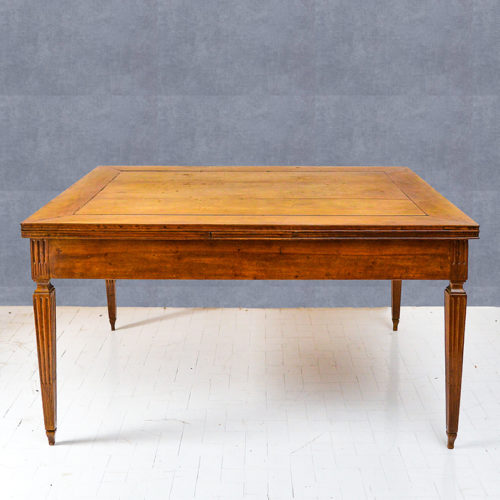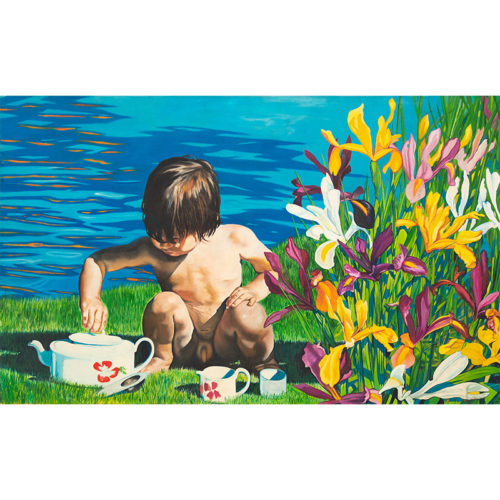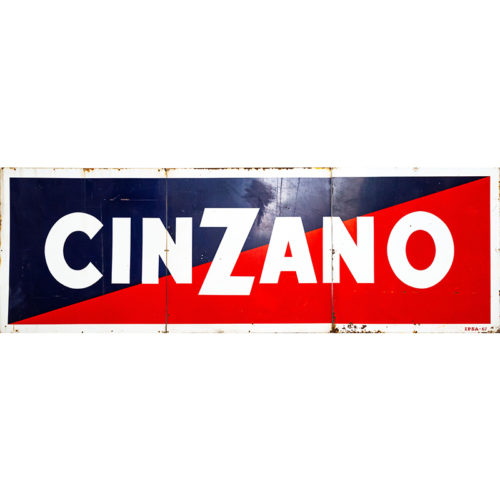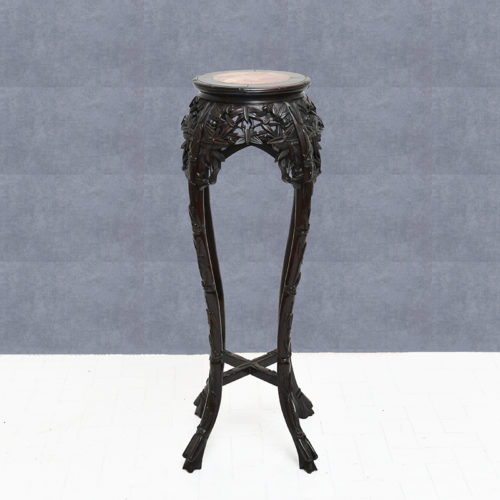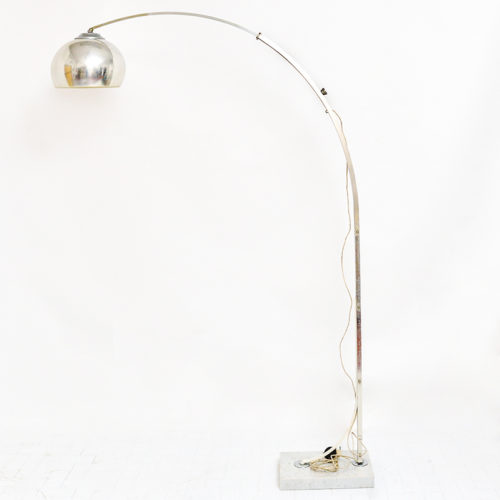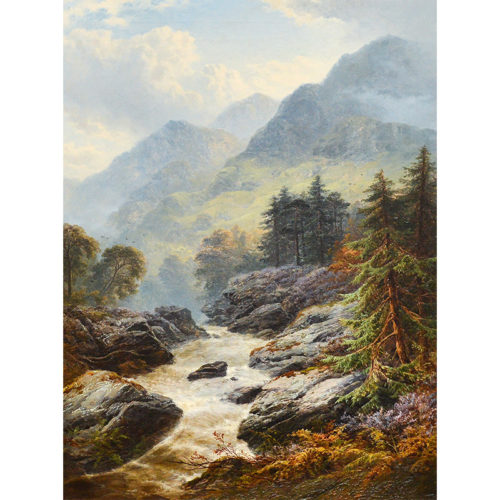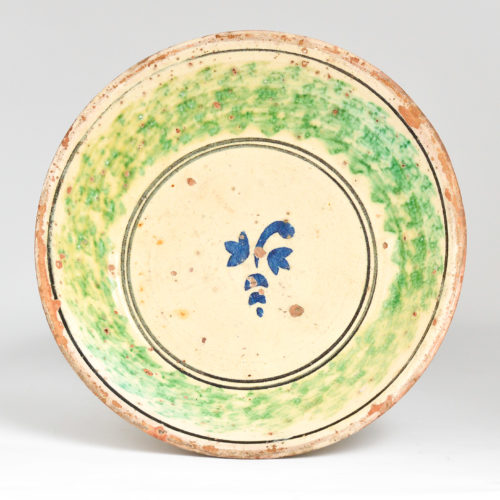Rare and elegant Venetian table in walnut, extendable, in Louis XVI style, dating back to the end of the 18th century, suitable for up to 10/12 people.
-
Out of stock
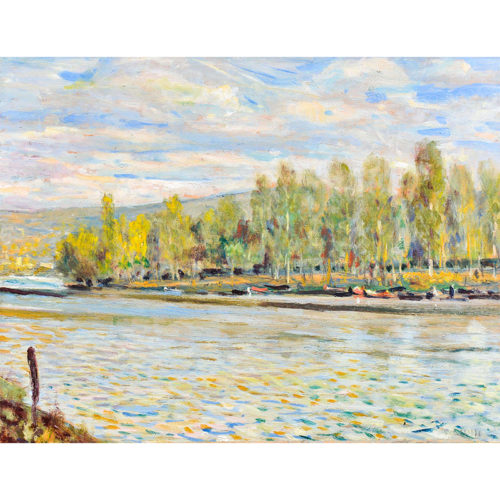 Period: September 14, 1943 Measurements: In frame H 52 x L 60 / Table H 33.5 x L 42 cm"This Arno with slow waters" - Oil on panel by Galileo Chini, signed on the lower right, bears the dedication on the back to his friend Giuseppe Orsi and the date 14 September 1943. CHINI GALILEO. Born on December 2, 1873 in Florence, died on August 23, 1956, then blind. As a boy he was a simple painter; at twenty he decided to study the ancient and modern masters. In 1899 with some friends he created "The Art of Ceramics", managing to give this feat a new physiognomy to Italian majolica. He has participated in numerous and important exhibitions in Paris, Leningrad, Barcelona, Saint-Louis, Brussels and in Italian exhibitions, including the Venice Biennials from IV to XVII. Among the various decoration works, those of the buildings of the Cassa di Risparmio of Pistoia, Arezzo and Florence, as well as those of the Throne Palace in Bangkok (Siam), and among the easel works: Quiete; The triumph; The Baptist; Icarus; The game and the fat tempera painting depicting The Last Supper, in which it reaffirms its qualities as a strong symbolist decorator of daring conceptions and a lovable coloring, which achieves remarkable effects with simplicity of means and with natural spontaneity. In 1932 he held a personal exhibition in Milan, at the Pesaro Gallery, with still life paintings, flowers, figures and Parisian landscapes or on the banks of the Arno. He was a teacher of decoration at the Academy of Florence.
Period: September 14, 1943 Measurements: In frame H 52 x L 60 / Table H 33.5 x L 42 cm"This Arno with slow waters" - Oil on panel by Galileo Chini, signed on the lower right, bears the dedication on the back to his friend Giuseppe Orsi and the date 14 September 1943. CHINI GALILEO. Born on December 2, 1873 in Florence, died on August 23, 1956, then blind. As a boy he was a simple painter; at twenty he decided to study the ancient and modern masters. In 1899 with some friends he created "The Art of Ceramics", managing to give this feat a new physiognomy to Italian majolica. He has participated in numerous and important exhibitions in Paris, Leningrad, Barcelona, Saint-Louis, Brussels and in Italian exhibitions, including the Venice Biennials from IV to XVII. Among the various decoration works, those of the buildings of the Cassa di Risparmio of Pistoia, Arezzo and Florence, as well as those of the Throne Palace in Bangkok (Siam), and among the easel works: Quiete; The triumph; The Baptist; Icarus; The game and the fat tempera painting depicting The Last Supper, in which it reaffirms its qualities as a strong symbolist decorator of daring conceptions and a lovable coloring, which achieves remarkable effects with simplicity of means and with natural spontaneity. In 1932 he held a personal exhibition in Milan, at the Pesaro Gallery, with still life paintings, flowers, figures and Parisian landscapes or on the banks of the Arno. He was a teacher of decoration at the Academy of Florence. -
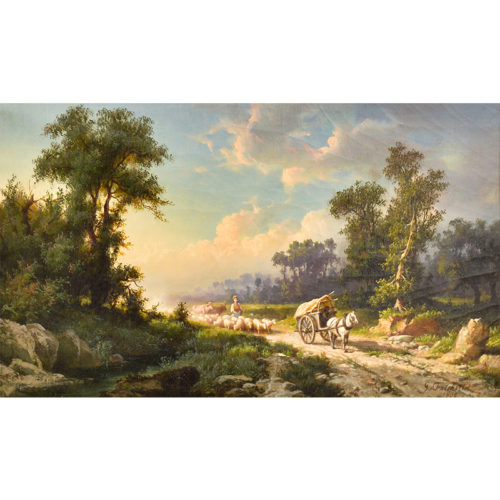 Period: 1899 Measurements: In frame H 56 x W 81.5 x D 7.5 / Canvas H 44 x L 68.5 cm"Return from pasture" - Oil on canvas by Giuseppe Falchetti (1843-1918), signed and dated lower right G. Falchetti 1899 Born in Caluso (Aosta), June 18, 1843, died in Turin on November 6, 1918. He attended the study of the Camino for five years, simultaneously studying the Flemish works preserved at the Pinacoteca di Torino. He specialized in painting still lives, and was commissioned by the Italian government, for twenty-seven years in row, to reproduce the best products of national viticulture. Hundreds of copies of his works were made and spread all over the world. He also treated the gorgeous landscapes. He had exhibited a Still Life in Turin in 1898.
Period: 1899 Measurements: In frame H 56 x W 81.5 x D 7.5 / Canvas H 44 x L 68.5 cm"Return from pasture" - Oil on canvas by Giuseppe Falchetti (1843-1918), signed and dated lower right G. Falchetti 1899 Born in Caluso (Aosta), June 18, 1843, died in Turin on November 6, 1918. He attended the study of the Camino for five years, simultaneously studying the Flemish works preserved at the Pinacoteca di Torino. He specialized in painting still lives, and was commissioned by the Italian government, for twenty-seven years in row, to reproduce the best products of national viticulture. Hundreds of copies of his works were made and spread all over the world. He also treated the gorgeous landscapes. He had exhibited a Still Life in Turin in 1898. -
 Period: Design 1912 Measurements: H seat 44 x H 67 x L 102 x P 94 cmPair of Chester Frau armchairs (Design Renzo Frau), original and branded. The Chester sofa refers to the classic model of Edwardian England, taken up by Renzo Frau in the first catalog of 1912, inspired by the sofas and armchairs that populated English clubs and country houses in those years. Load-bearing structure in seasoned beech, hand-tied biconical steel springs, jute belts, rubberized vegetable hair and hand-shaped vegetable hair. The seat cushions are in goose down. The upholstery is in Frau leather with capitonnée work done entirely by hand. A row of nails covered in leather finishes the back.
Period: Design 1912 Measurements: H seat 44 x H 67 x L 102 x P 94 cmPair of Chester Frau armchairs (Design Renzo Frau), original and branded. The Chester sofa refers to the classic model of Edwardian England, taken up by Renzo Frau in the first catalog of 1912, inspired by the sofas and armchairs that populated English clubs and country houses in those years. Load-bearing structure in seasoned beech, hand-tied biconical steel springs, jute belts, rubberized vegetable hair and hand-shaped vegetable hair. The seat cushions are in goose down. The upholstery is in Frau leather with capitonnée work done entirely by hand. A row of nails covered in leather finishes the back. -
Out of stock
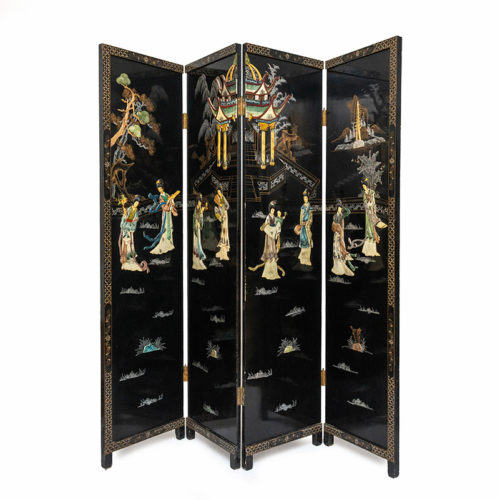 Period: 1950s Measurements: H 183 x L 182 P closed 12 / P open 3 cm (L door 46)50s Japanese separè, one side decorated with painted applications and decorations.
Period: 1950s Measurements: H 183 x L 182 P closed 12 / P open 3 cm (L door 46)50s Japanese separè, one side decorated with painted applications and decorations. -
Out of stock
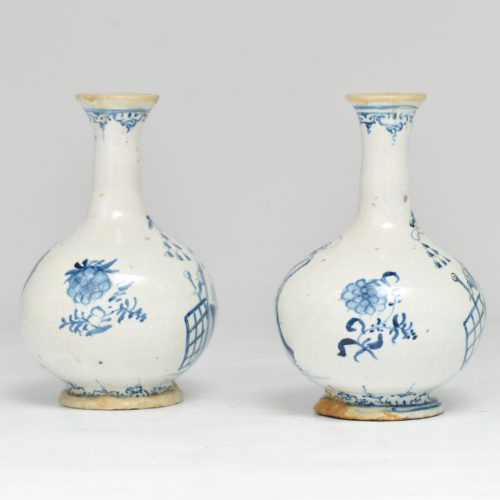 Pair of ointment containers, Savona, in good condition, dating back to the 18th century. In 1641 the Genoese Senate granted to the Grosso factory in Albisola the privilege of marking the ceramics with the symbol of the lighthouse of Genoa, the lantern. Between the end of the seventeenth and the beginning of the eighteenth century, again with the permission of the Genoese Senate, the lantern became the symbol of the Chiodo-Peirano, society of Savona. The Chiodos, after 1738, who remained the sole owners of the factory, continued to mark their ceramics with the lantern until 1782, the year of the transfer of the factory to the company Pittamiglio-Astengo-Carlevarino, which in turn gave up the business in 1786. Epoca: '700 Measurements: H 18 x Ø 12 cm
Pair of ointment containers, Savona, in good condition, dating back to the 18th century. In 1641 the Genoese Senate granted to the Grosso factory in Albisola the privilege of marking the ceramics with the symbol of the lighthouse of Genoa, the lantern. Between the end of the seventeenth and the beginning of the eighteenth century, again with the permission of the Genoese Senate, the lantern became the symbol of the Chiodo-Peirano, society of Savona. The Chiodos, after 1738, who remained the sole owners of the factory, continued to mark their ceramics with the lantern until 1782, the year of the transfer of the factory to the company Pittamiglio-Astengo-Carlevarino, which in turn gave up the business in 1786. Epoca: '700 Measurements: H 18 x Ø 12 cm
